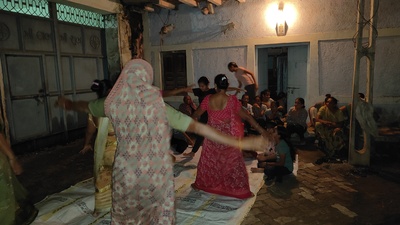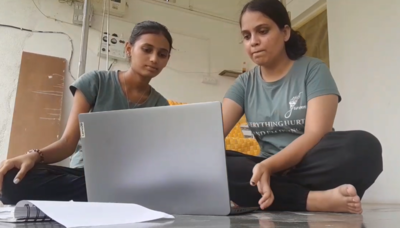
A Routine that Fuels.
“Warm-ups are actually embedded in the basic Classical (Arts) training,” shares Dr. Parul Purohit Vats, Dean of the school of Performing Arts at The World University of Design. She was trained in 5 different gurukuls and has been Dancing since the age of 6. She provides insight into the art of muscle memory as well. She says a routine is routine because it teaches and prepares the body for a smoother Dance, a demanding practice, and a stronger deliverance. A routine starts in the morning and stays with the Dancer all along.
What is the Classical Dancer’s routine?
Having been a Classical Dancer all her life and now being a mentor, Ms. Parul has her definition for a routine for both herself and her dear students.
Here is a peek into the routine:
- Start the day fresh with meditation and morning walks to align the body and the mind.
- Eating right is an active part of the routine: eating nutritious food at the right time and, equally important, staying hydrated by drinking plenty of water.
- Tidy up our own space to connect with the dharthi, the Earth—where energy is derived for a Dancer.
Jumping right into actual preparation for Dance practice sessions:
- 45-minute regular Dance warm-up where the Dancer practices several elements of the Dance form.
Start with stretches, alerting the body for more.
Slow speed to highest speed possible footwork, making sure the taal is matched.
Perform fundamental movements and postures like aramandi in Bharatanatyam and chakras in Kathak
Practice minute movements or isolated movements like expressions, shoulders, or only footwork.
That or centering exercises to strengthen the core and bring mental focus and get fully charged up.
- Move on to practice by gurus or mentors. Learning new movements and modifying the older ones into better ones.
After practice, a routine is also important. A routine to relax, reflect, and express.
- Final stretches to relieve and calm the body.
- Post-practice discussion circles to verbally communicate anything and everything about the practice and around the practice. After a long day, Dancers would want to reflect and speak about things that they feel, and this is that time. Verbal communication is as important as communicating through gestures and expressions (Dance). Sometimes words need to be spoken to be understood.
- These discussions allow for a creative synergy and are key for excellent teamwork. The team can brainstorm ideas to enrich their experiences, and that is how Dancers take initiative to be better.
- Watch videos of practice and other experts to plan the next day efficiently. We grow when we notice it and incorporate it into Dance.
- Reading and reflecting on literature will improve understanding and make a performance look complete. Regularly reading about Dance and stories to Dance allows the Dancers to enhance their learning by making imaginations limitless and turning their Dance movements to be more authentic. Needless to say, their creative problem-solving skills also gradually develop in the process.
Rehearsing the routine beyond Dance:
In addition to physical and mental strain and pressure, preparing ourselves for a performance is sometimes difficult, and all activities like dressing up and make-up should be practiced. This will reduce the time spent hurriedly dressing up for performance and disrupting mental peace before performance.
Breathing: The Dancer’s hidden strength
Breathing exercises are one of the most important yet often overlooked parts of a dancer’s routine. While they may seem minor, they have a significant impact on both performance and overall well-being. Proper breathing helps dancers manage their energy, build stamina, and avoid internal strain. It also plays a key role in staying calm and focused, especially when dealing with nerves or self-doubt. With steady, controlled breathing, movements become more fluid and graceful, and the body can handle even the most demanding routines. It allows dancers to perform longer without getting as tired—more wonders to be unlocked when actually practiced.
Movement, Mind, and Mastery
As Dr. Parul beautifully puts it, every movement activates the body, and staying engaged in all aspects of the creative process opens the door to self-discovery. When a dancer consistently shows up and puts effort into their daily routine, that growth becomes visible—not just to themselves, but to everyone watching. A truly captivating performance doesn’t come from dance alone but from drawing inspiration and knowledge from various creative fields. It’s this dedication and depth that turn a performance into something memorable, meaningful, and prompting applause.




Comments